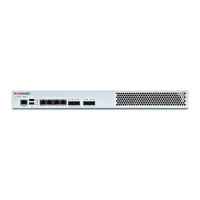Virtual Server & Server Load Balancing Load Balancing & Fault Tolerance
Server Pool :
l Server IP: The real IP (IPv4) of the server, most likely in LAN or DMZ.
l Detect: Choose the protocol for detecting server status: ICMP, TCP@, and No-Detect.
Note: port number must be specified for “TCP@”.
l Service: The type of TCP/UDP service to be matched. Select matching criteria from
publicly known service types (e.g. FTP), or choose port number from TCP/UDP packet.
To specify a range of port numbers, enter starting port number plus hyphen “-“and
ending port number, e.g. “TCP@123-234” (See "Using the web UI").
l Weight: Weight determines which server responds to the incoming requests. The
higher the weight, the greater the chance is for the corresponding server to be used.
L : Check to enable logging: Whenever the rule is matched, system will record the event to log
file.
IPv6 Virtual Server
E : Check the box to enable the rule.
When :
Options: Busy hour, Idle hour, and All-Time (See "Busyhour Settings").
WAN IP : For external internet users, the virtual server is presented as a public IP (IPv6) on WAN port.
This WAN IP is the "visible" IP for the virtual server in external environment. Select a public IP,
and in "Routing Mode", either enter the IP manually or select the IP obtained from WAN link;
In "Bridge Mode One Static IP", insert WAN IP and the public IP assigned by ISP; Or choose
"dynamic IP at WAN#", if WAN type is none of the above.
Service : The type of TCP/UDP service to be matched. Select matching criteria from publicly known ser-
vice types, or choose port number from TCP/UDP packets. To specify a range of port num-
bers, type starting port number plus hyphen “-“and ending port number, e.g. “TCP@123-234”
(See "Using the web UI").
Server IP : The real IP (IPv6) of the server, most likely in LAN or DMZ.
L : Check to enable logging: Whenever the rule is matched, system will record the event to log
file.
Example 1
The settings for virtual servers look like:
FortiWAN Handbook
Fortinet Technologies Inc.
165

